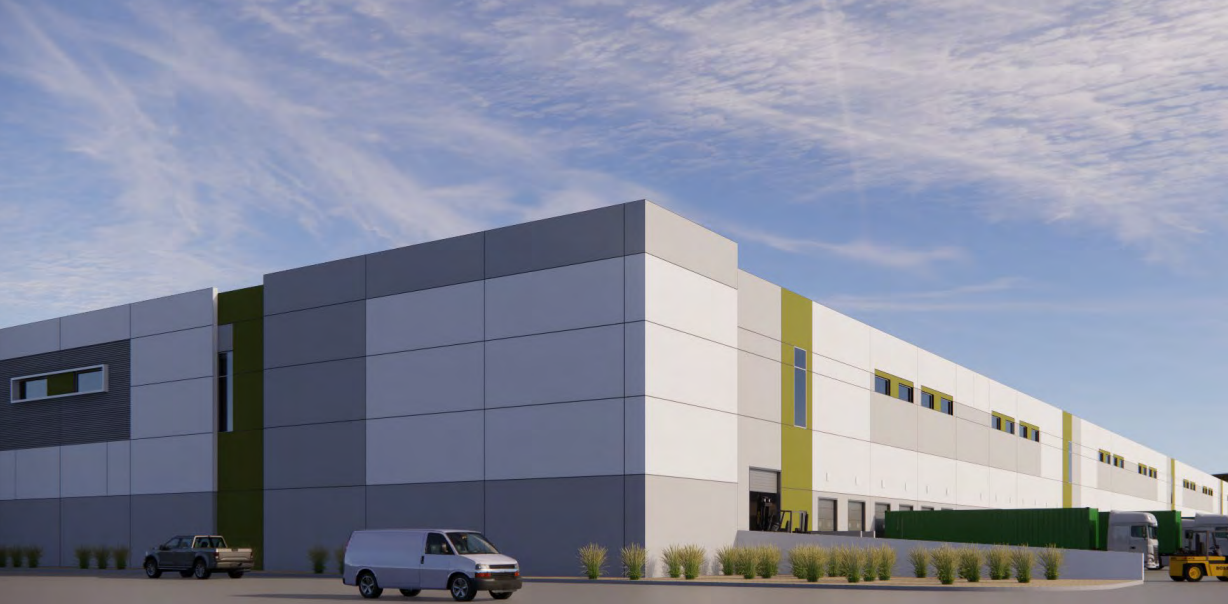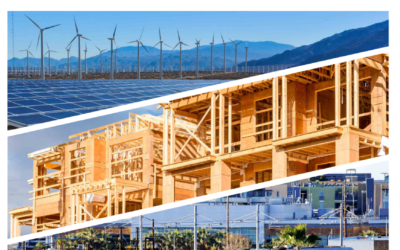The Palm Springs Planning Commission, at its December 4 meeting, will review a proposed major development project for a 739,360-square-foot warehouse facility on a 38-acre site at the corner of North Indian Canyon Drive and 19th Avenue. PS Canyon Development, LLC, the project’s owner, seeks approval for what they call a “fulfillment center,” designed for 24/7 operations, with capacity for 700 employees and extensive parking for both passenger vehicles and trucks. The project requires a Final Environmental Impact Report (FEIR) certification due to significant environmental concerns, including greenhouse gas emissions and transportation impacts.
Project Details and Zoning Compliance
The proposed two-story warehouse would include 727,360 square feet for warehousing operations and 12,000 square feet for office space, aligning with the City of Palm Springs zoning requirements in the M-2 industrial zone. The facility will feature 420 parking spaces for vehicles, 306 spaces for trucks and trailers, and 110 loading docks. The Planning Commission will also review landscape plans that feature drought-tolerant trees and plants across approximately 4.15 acres, including a stormwater retention basin.
The current zoning ordinance, approved by the City Council in 2022, permits large warehouses and logistics centers in the area north of Interstate 10 without requiring additional conditional use permits. The proposed development has been deemed a by-right use, aligning with the city’s updated land-use plan, encouraging industrial and business park development.
Environmental Review and Public Feedback
The California Environmental Quality Act (CEQA) mandates the preparation of an Environmental Impact Report (EIR) for this scale of development. The report identifies multiple areas of potential environmental impact, with transportation and greenhouse gas (GHG) emissions flagged as “significant and unavoidable.” Despite proposed mitigation strategies – such as rideshare programs, onsite bicycle facilities, and telecommuting options – the project is projected to generate more emissions and traffic than these measures can offset.
The draft EIR was publically reviewed in April 2024, and comments were collected through October. The Planning Commission received nine letter comments from agencies, organizations, and residents, some of whom voiced concerns about the project’s impacts on traffic congestion and air quality in surrounding neighborhoods.
This proposal is the latest to enter a rapidly evolving regulatory landscape, as California’s recently passed Assembly Bill 98 (AB98) introduces new restrictions on warehouse development in response to concerns over pollution, traffic, and impacts on residential neighborhoods. AB98, set to take effect in 2026, will affect cities and counties statewide by enforcing new siting standards that limit proximity to sensitive sites like homes and schools while mandating specific design, setback, and energy efficiency requirements.
While AB98 does not directly affect this project, its provisions have already fueled discussions about the future of warehouse development in Palm Springs. Starting in 2026, AB98 will require stricter setbacks from residential areas and environmentally sensitive sites, higher energy standards and compliance with specific design regulations. These requirements echo calls from the California Air Resources Board, which previously recommended keeping large warehouses at least 1,000 feet from sensitive sites, citing significant pollutant concentration drop-offs beyond that range.
Environmental advocates see AB98 as a partial step, with some arguing it still falls short of the state attorney general’s recommendations for safer setbacks. Nonetheless, AB98 will require significant planning updates, potentially incurring costs estimated by the Senate Appropriations Committee in the tens to hundreds of millions for cities.
Mitigation Measures and Statement of Overriding Considerations
The commission is expected to adopt a Statement of Overriding Considerations (SOC), justifying the project’s approval despite unmitigated environmental impacts. The SOC emphasizes the anticipated economic benefits, including job creation and local tax revenue contributions, outweighing the environmental drawbacks. The benefits outlined are increased employment opportunities, local infrastructure improvements, and economic growth from industrial expansion.
The EIR proposes specific mitigation measures, including a Traffic Control Plan to manage construction-related traffic, measures to enhance pedestrian and cyclist safety, and coordinated utility extensions. Southern California Edison and the Mission Springs Water District will supply necessary electricity, water, and sewer services, following planned extensions to accommodate the project’s needs.
Community and Regional Impact
As the Greater Palm Springs’ industrial landscape continues to evolve, projects like this will likely play a pivotal role in reshaping regional infrastructure and employment. However, concerns about air quality, noise, and increased traffic have divided community opinions. The Planning Commission has committed to balancing economic interests with environmental sustainability, with representatives assuring residents that the project will comply with citywide emission and transportation policies.
The developer has outlined the anticipated economic benefits for the city, including projections of millions of dollars in revenue from the taxation of the orders of products fulfilled by the warehouse, along with increased property tax revenue. The SOC estimates that 718 permanent jobs will be created. The developer has not named a tenant for the warehouse at this point. The most likely user is Amazon, but plenty of other companies are also looking to expand their warehousing capacity as space in the western portion of Riverside County and intense public antipathy toward additional space being developed there pushes the search for land eastward into Greater Palm Springs.
For residents, environmental advocates, and the business community alike, the outcome of the Planning Commission’s deliberations could set a significant precedent for future large-scale developments in the region.
Public Hearing
The Palm Springs Planning Commission is scheduled to hold a public hearing on the project on Wednesday, December 4, at City Hall. Community members are encouraged to attend and voice their perspectives on the proposed fulfillment center. Following the hearing, the commission will vote on certifying the EIR and granting the development permit.




